Caldwell, ID. As someone who grew up in Maryland, just outside of Washington, D.C., and has since moved to Caldwell, Idaho, I was particularly intrigued by Grace Olmstead’s Uprooted: Recovering the Places We’ve Left Behind because we more or less crossed paths in our respective treks across the nation. She grew up near Emmett, which shares Idaho’s Treasure Valley with Caldwell, and now lives on the Virginia side of our nation’s capital. Uprooted intersperses Olmstead’s personal account of her family’s practice of place in the context of historical reflections on farming and agriculture in the Treasure Valley and the U.S. as a whole. Along the way, she introduces readers to a wide range of farmers from her great-grandparents, who started farming in Emmett during the Great Depression, to members of the current generation of Emmett farmers such as Matt Williams of Waterwheel Gardens.
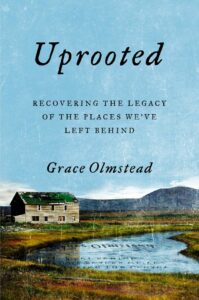 Olmstead is a regular conversation partner at Front Porch Republic, and has also written for The American Conservative, The Week, The New York Times, and The Washington Post, among others. For more on Uprooted at FPR, see these thoughtful pieces from Jeff Bilbro, Russell Arben Fox, and Alan Cornett.
Olmstead is a regular conversation partner at Front Porch Republic, and has also written for The American Conservative, The Week, The New York Times, and The Washington Post, among others. For more on Uprooted at FPR, see these thoughtful pieces from Jeff Bilbro, Russell Arben Fox, and Alan Cornett.
Stewart: Uprooted describes the many challenges that we face in attempting to cultivate roots and to build stable communities. Did your understanding of those obstacles change as you were writing the book? The years in which you wrote it have not been marked by stability!
Olmstead: My understanding definitely changed with time. The subject, of course, became more complicated the more I unveiled. As I undertook research for the book, every new inquiry into Idaho’s history and ecology revealed new nuances and details. And new things kept happening and complicating my understanding of the region and its future: Boise’s suburban boom really began garnering national attention—and picking up steam—as I was working on Uprooted. Brad Little, a native of Emmett, became governor of the state. Farms, orchards, dairies, and ranches I visited or scheduled interviews with closed down. And with new presidential administrations, national political and economic policy changed, as well.
I changed, too: I had two babies over the course of writing the book (my firstborn was about two and a half at the time), and all three children have changed my relationship to place and home through their own belonging in Virginia. I met new people who, through their stories and friendship, revealed new important dynamics and considerations on the subjects of rootedness and place.
But there were some things that remained consistent: local industry, community connectedness, and tradition were slowly being lost. The population continued to age even as suburbanization brought newcomers (likely because many moving into Emmett are retirees). Young people were still leaving. And agricultural operations—especially those that are more commodity crop and dairy-focused—continued to struggle. The health of the soil arose as a concern which connected all of these things in an interesting and important way. Healthy soil requires multigenerational efforts aimed at stewardship, nourishment, and replenishment. Both ecology and culture are impacted by the loss of those roots, those past and present strands of connection and preservation.
Stewart: Like Wendell Berry, you offer radical criticism of current agricultural practices in Idaho and elsewhere. How can those who are wary of the unintended consequences of radical change attempt to reform such practices?
Olmstead: Not all agricultural practices in Idaho are bad, and I try to highlight farmers in Idaho who are doing good work. The farmers I profile in my book, including those growing commodity crops, are running far more diversified agricultural operations than most people in the United States. Their farms are quite small, too.
We can always be working for greater health and wholeness in our agricultural landscapes, however—by increasing the amount of perennials grown in local ground, reforming the way we grow cereal crops to increase soil health, decreasing the use of pesticides and herbicides on the land, and increasing the presence of plants and animals that will enrich local soil and feed local people (to name a few things).
Working toward these changes needn’t always involve radical change, if one is speaking here of “fast” change, or the quantity of change taking place at once. Indeed, increasing the health of soil and land tends to be a process you can’t speed up. Moving toward more regenerative agricultural patterns requires slow but steady efforts at complicating habits and rhythms, and adding diversity where homogenization used to exist. It requires a great deal of prudence, thoughtfulness, and sobriety.
If these changes are radical, then, they represent a qualitative sort of radicalism: one in which we are slowly but surely seeking to change farming’s rhythms, and even its telos. Peter Dill, one of the farmers in my book, says that he and his wife sought to make radical changes on behalf of their soil. But by that, he meant that they let go of immediate profit, ease, and comfort—in many ways, our conception of the “American dream” and the good life—in order to do the hard, often lonely work of conservation and renewal. The health of their soil and farm was not a means to an end (greater profit)—health was the end itself. This form of radicalism involves questioning American’s fundamental understanding of what a farm ought to accomplish, and instead choosing to respect an older, more complex version of wholeness.
Stewart: The pandemic has unsettled a lot of assumptions. Have you noticed new opportunities to argue for some of these changes? Have you observed any interesting shifts in how people are thinking about place and roots?
Olmstead: I think the pandemic has given us plenty of new opportunities to make arguments for change in the realm of agriculture (I’ve already written one). Food insecurity and failing supply chains forced many Americans to acknowledge, for the very first time, just how unstable and fragile our food system has become.
I hope, too, that the pandemic made more Americans realize how much proximity and place still matter. We saw calls for a revival of front porches, along with news stories reporting on growing friendships between neighbors. People planted victory gardens, and borrowed sourdough starter from folks they knew. While the virtual world (and Zoom, in particular) tried to steal the limelight last year, I think small acts of neighborliness and outreach were vital to survival.
Initial data suggests that a whole lot of young people moved home during the pandemic (perhaps more than at any time since the Great Depression). Work-from-home arrangements, meanwhile, encouraged a lot of other Americans to relocate to small towns or rural areas with their families. We still don’t know how many of those moves will be permanent. And we need rooted people in the city just as much as we need them in the country! But it is interesting to see how the pandemic inspired many Americans to question their relationship with place—and, in many instances, to draw them back toward family ties and a closer relationship with the land. Moving for career acclaim is an easy choice, perhaps, when everything’s good. But in times of trouble and difficulty, I think we naturally desire community, and move where we might have more familial and neighborly support.
Stewart: Over the last decade, I’ve lived and worked in both the Rust Belt (Syracuse, New York) and the Sun Belt (Caldwell, Idaho—not exactly the Sun Belt, but close). While living in the Rust Belt, I worried that there might not be enough jobs for people who wanted to stick, but there is a wide range of options for housing. In the Sun Belt, there are more jobs but the housing prices are becoming prohibitive for people with modest incomes who might want to stick. Which threat seems more common? Which seems more difficult to surmount?
Olmstead: I don’t know if one is more common than the other. They seem to be widespread regional problems, and often (but not always) impact our urban vs. rural divide. Many areas of rural Kansas seem to fit with your description of the Rust Belt, while the area where I live in Virginia has a lot of the same housing price issues that the Sun Belt has. (Virginia’s housing prices are, at least at this point, still more prohibitive than Idaho’s.)
I think the latter problem, however, can be addressed—at least somewhat—through smart growth and a rejection of NIMBYism. More housing (especially if it’s not just single-family suburban housing) helps meet the issue of demand, and helps regions with a lot of promise remain accessible to people—including lower-income people—seeking to move there. The challenge, of course, lies in achieving the “smart” in smart growth. And the folks over at Strong Towns do an excellent job detailing all the important things to consider when we consider what smart growth should look like.
The former problem is more perplexing, at least to me, because you need to find ways to attract companies to hollowed-out towns and convince them to invest in a place where there might not be a lot of initial benefit to them. This was part of the discussion around Amazon “HQ2” that was so interesting—and frustrating—to a lot of people a few years back. Amazon could have moved its headquarters anywhere in the country, and built a lot of wealth and opportunity wherever it landed. They could have made a conscientious effort to move to a place that needed their presence and ongoing investment. Instead, they chose to move to Arlington, Virginia—an area with no lack of jobs and wealth, and with astonishingly high housing prices—thus further entrenching the problem you outline above.
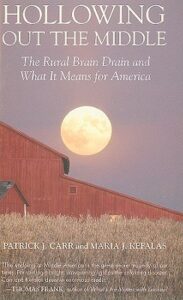 Much ink has been spilled on how—and whether—we can attract more companies to hollowed-out areas. I’m curious how President Biden’s USDA appointments might influence this, for good or ill, as they tackle issues of rural development in years to come. But I hope “returners” (as Maria Kefalas and Patrick Carr call them in their book Hollowing Out the Middle)—or “homecomers,” as Sarah Smarsh and Wes Jackson have termed them—might play an important role in this work going forward.
Much ink has been spilled on how—and whether—we can attract more companies to hollowed-out areas. I’m curious how President Biden’s USDA appointments might influence this, for good or ill, as they tackle issues of rural development in years to come. But I hope “returners” (as Maria Kefalas and Patrick Carr call them in their book Hollowing Out the Middle)—or “homecomers,” as Sarah Smarsh and Wes Jackson have termed them—might play an important role in this work going forward.
Cultivating more “returners” to rural America is important to me, because ultimately, Amazon isn’t the best iteration of “jobs moving in” I think we could ask for or envision. It would be far better, and healthier, to see a diverse, locally-owned cluster of businesses breath health and economic empowerment back into our small-town communities. That’s what I’m ultimately seeking to promote at the end of my book, as I think through the policy options and solutions available to us. I think we should work to cultivate the agency and entrepreneurial opportunities of local people, so that 1) they’re empowered to stick in the communities they love, and 2) they can foster opportunities for others to remain there.
Stewart: Your book reminded me of something Wallace Stegner once wrote about roots as a metaphor:
Roots, a conception much in vogue among regionalists, I look upon with some suspicion. In the first place, the metaphor is a little misleading—writing is not a biological process. In the second place, those who espouse roots forget that (to keep the botanical metaphor) plants also have branches and leaves and flowers and seeds. To concentrate on roots is to emphasize the immovable as well as the unconscious. Roots are not so different from leg irons, actually. I will accept them as the instruments of nourishment, but not as limitations. And that brings me back to where we began: if regionalism means, in any form, limitation, then I want nothing to do with it.
It came from an essay from the 1970s and he did not republish it in any of his essay collections. I’m still wondering what to make of this idea—he seems a little glib in his dismissal of limits, but as someone who has moved several times myself, I think there is something to expanding the range of the plant metaphor. What do you make of it?
Olmstead: I would love to see more of the context around the quote (an initial internet search hasn’t revealed anything). It seems Stegner is speaking here, at least at first, of regional writers and how rooted they ought to be in order to engage in their craft. Which is a fascinating question: Willa Cather focused many of her novels on the Great Plains—more specifically, in Nebraska—where she grew up. But she didn’t stay in Nebraska. And one of her best works, Death Comes For the Archbishop, focuses on an entirely different region of the United States. Does that make her novels less powerful than Wendell Berry’s? I don’t think so. But there is something very poignant and artistically unique about Berry’s own efforts to devote his life, and his entire body of writing, to one particular place.
Stegner’s condemnation of limits here strikes me as odd, because his writing heavily features (as A.O. Scott argued in the New York Times) the concepts of fidelity and monogamy—and both are deeply limiting virtues. Rootedness is another way of contemplating fidelity, and it involves (as Wendell Berry so beautifully paints in his novel Jayber Crow) its own form of monogamy, one might say. If writing is itself not a biological process, we as humans are biological, and our own wellbeing and health is tied to the biological health of the roots in our soil. The metaphor of rootedness is (like most, if not all, other metaphors) imperfect. But it makes clear that limitations are an essential part of being human—and of being a healthy human. We shouldn’t look at roots or the concept of rootedness to the detriment of “branches and leaves and flowers and seeds”—and as I note in my book, if it’s unhealthy for us to live in a specific place, we should leave it behind. But as Stegner himself notes, constant transience is a bad replacement for rootedness. He writes the following in “The Sense of Place”:
[The displaced person] … is non-territorial, he lacks a stamping ground. Acquainted with many places, he is rooted in none. Culturally he is a discarder or transplanter, not a builder or conserver. He even seems to like and value his rootlessness, though to the placed person he shows the symptoms of nutritional deficiency, as if he suffered from some obscure scurvy or pellagra of the soul. … Complete independence, absolute freedom of movement, are exhilarating for a time but may not wear well. That romantic atavist we sometimes dream of being, who lives alone in a western or arctic wilderness … is a very American figure but he is not a full human being.
To be full human beings, Stegner seems to suggest here, requires at least a form of rootedness, a determination to become “placed persons.” That doesn’t necessarily require staying in one place for one’s entire life. But perhaps, rather than serving as leg irons, some form of rootedness can offer us a more supple and nourishing form of belonging.
Stewart: Yes, sorry about that. I’m wondering if he didn’t reprint it because he changed in the way that you point out. At the time that he wrote that essay (“Regionalism: No and Yes,” 1975) it seems like he neglected the paradox that roots cannot be nourishing without also serving as limits. Perhaps it took a few more years of Stegner growing in his understanding of what Berry was able to see and do as a placed person before he was able to imagine roots as limits that are actually healthy.
But still, though like you I’ve long been sympathetic to Berry’s arguments for place, I have been wondering if I want to rank fidelity to place as high as I once did, even if I don’t want dismiss place either. Part of the reason for that is that I’ve seen more clearly just how difficult it can be to reconcile place with other goods that demand our fidelity. You wrestle with this dynamic in the book—can you share your thoughts on how, when, and why people might be called to leave a place, and how that can be done in ways that do not undercut the places that have been left?
Olmstead: I talk at the end of my book about how my great grandmother (known as “Grandma Mom”) was a “transplant.” She left the heartland behind with her family, and started a new life in Idaho. I don’t think that was a wrong choice. They were poor, struggling, and the Great Plains was on the cusp of the Dust Bowl and Great Depression. Her immigrant family didn’t have the power or money to affect change in their region—on the contrary, staying likely would have severely impacted their health and wellbeing.
I worry about overusing the soil/rootedness metaphor, for fear of oversimplifying or becoming trite. But hopefully this is a helpful thought experiment, in considering why and where we should leave place behind—After the Mount St. Helens eruption, environmental devastation was “off the scale.” Everything was “buried in ash and practically sterilized,” Smithsonian Magazine reported in 2005. But then something extraordinary happened:
…[I]n June 1982, Crisafulli and another ecologist, surveying the Pumice Plain by helicopter, spotted the first plant they’d seen for miles. They landed and found a flowering lupine, surrounded by a ring of seedlings. The deep ash and pumice held few nutrients, but lupines, like other plants in the pea family, get nitrogen from bacteria that live on their roots. Crisafulli established a 200-square-yard study plot around that pioneering plant. Within four years, he counted 16,000 lupines in the plot; three years later, 35,000. … The flourishing of life on the Pumice Plain may have begun with that lone lupine. Once the plants enriched the soil with nitrogen, adding organic material to it when they died, other plants and then animals soon followed.
I think some places need the human equivalent of a “prairie lupine”: people with special talents and zeal for renewing broken places, people who are eager and willing to invest there. Those are the sorts of people who then nourish health and opportunity for others, and make it possible for more people (with less specialized callings) to move in. But it’s not a vocation for everyone. If you’re financially insecure, or perhaps have a very young family with a lot of needs, it may not make sense for you to try and be that person: to move to a place that will require too much from you, financially and personally. It is, as you say, important to consider the entirety of one’s calling, and to make sure you are not sacrificing other, important goods in your decision to stick somewhere.
Timothy Kleiser, in a wonderful piece published by The American Conservative, wrote that “physical mobility can paradoxically cause a person to become more place-oriented when their goal is to plant deep roots in their new place. The problem arises—as it did with me—when such mobility becomes transience, a state of perpetual movement that makes it impossible to cultivate a strong sense of place.” Fidelity to place needn’t (and shouldn’t) result in stuckness, a condemnation of ever moving at all. But we must beware falling into that second trap: rejecting roots altogether.
It’s impossible for us to guarantee that moving won’t somehow undercut the places we leave behind. In my own case, I’m hoping that attentiveness to and support of my homeland, even from a distance, can be an ongoing form of love and devotion. Looking back at what’s left behind guarantees that we will not become apathetic or nonchalant, at least. Maybe it will show us ways we can continue tangibly investing and loving those places. (And at least leave us open to the prospect of returning.)
But above all else, I think the calling should be to live well and faithfully wherever you are—and hopefully, if you’re able, to live there for a long time, so that long attentiveness and presence in place enable you to truly see, understand, and address local needs in a deep and lasting way.
Stewart: I’m glad to end with the thought of lupines growing up through the ash of Mount St. Helens. Thanks for the interview and a fine book!
Photo credit: Lupines and prairie-fire flowers near Johnston Ridge Observatory, northwest of Mount St. Helens.

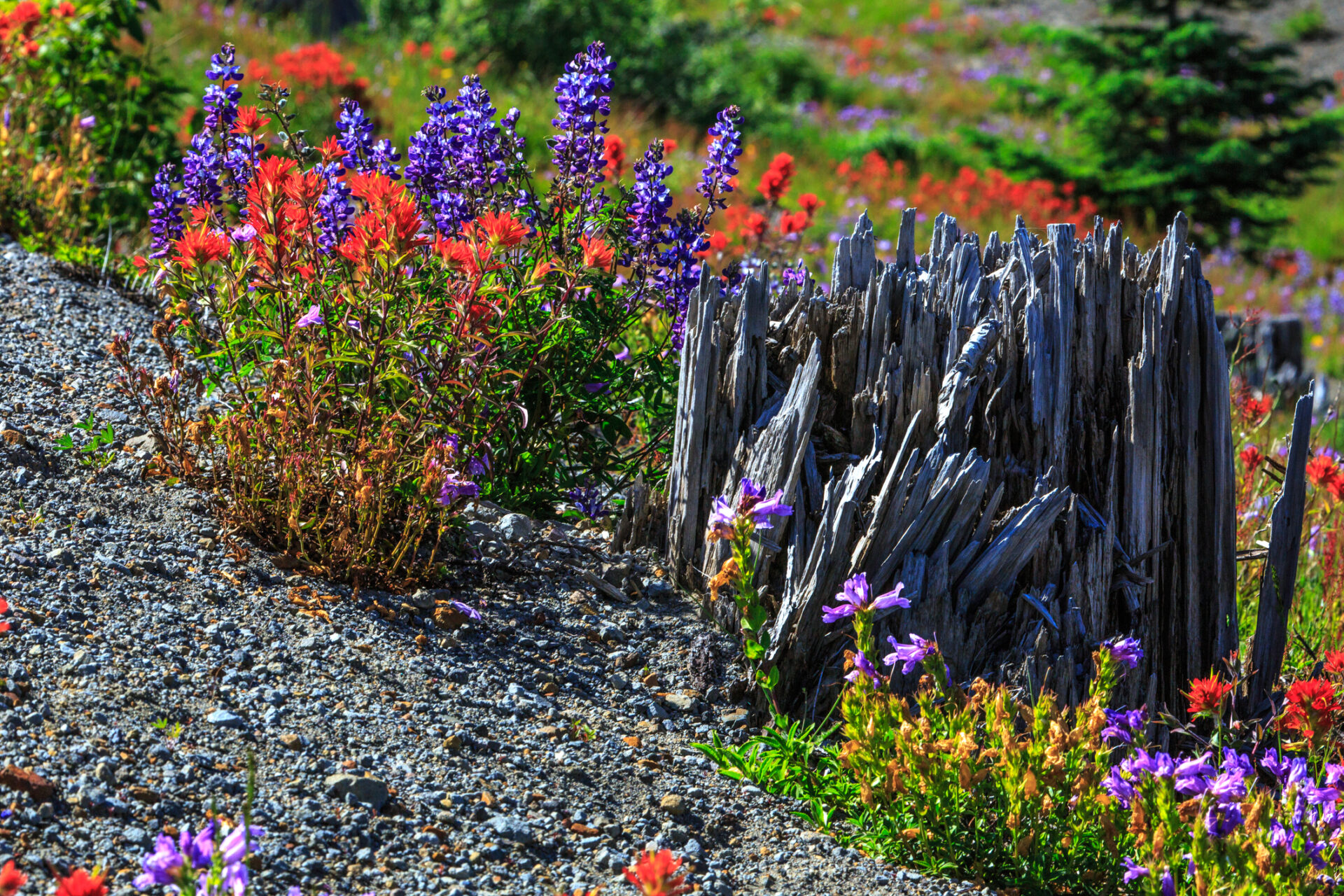


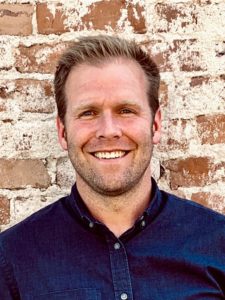


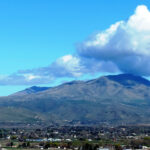
2 comments
Brian
The book was very good. One “flaw” might be that it is so agrarian-focused, which is a shortcoming I’ve also pointed out about FPR. There are many, many works written from that perspective, but where are the books about what might possibly be done to bring back small retail businesses? Small towns all across America had literally scores of businesses a few decades ago, and are now lucky to have a dollar store and a gas station, with every other one having a grocery store and every county or so having walmart and a few big box stores / chain restaurants. Where are the works talking to the people trying to run a small diner, bookstore, retail store, etc.? The odds of building an economy to support such people is far greater than one that supports many independent farmers in the near future, for better or worse. (Both are vanishingly unlikely, of course, because of economies of scale, political reality, etc.)
Rory Groves
A few of those non-agrarian businesses are mentioned in Durable Trades, with personal interviews. Tradesmen, obviously, but also restaurateurs, merchants, innkeepers, micro-breweries and butchers, to name a few.
Comments are closed.